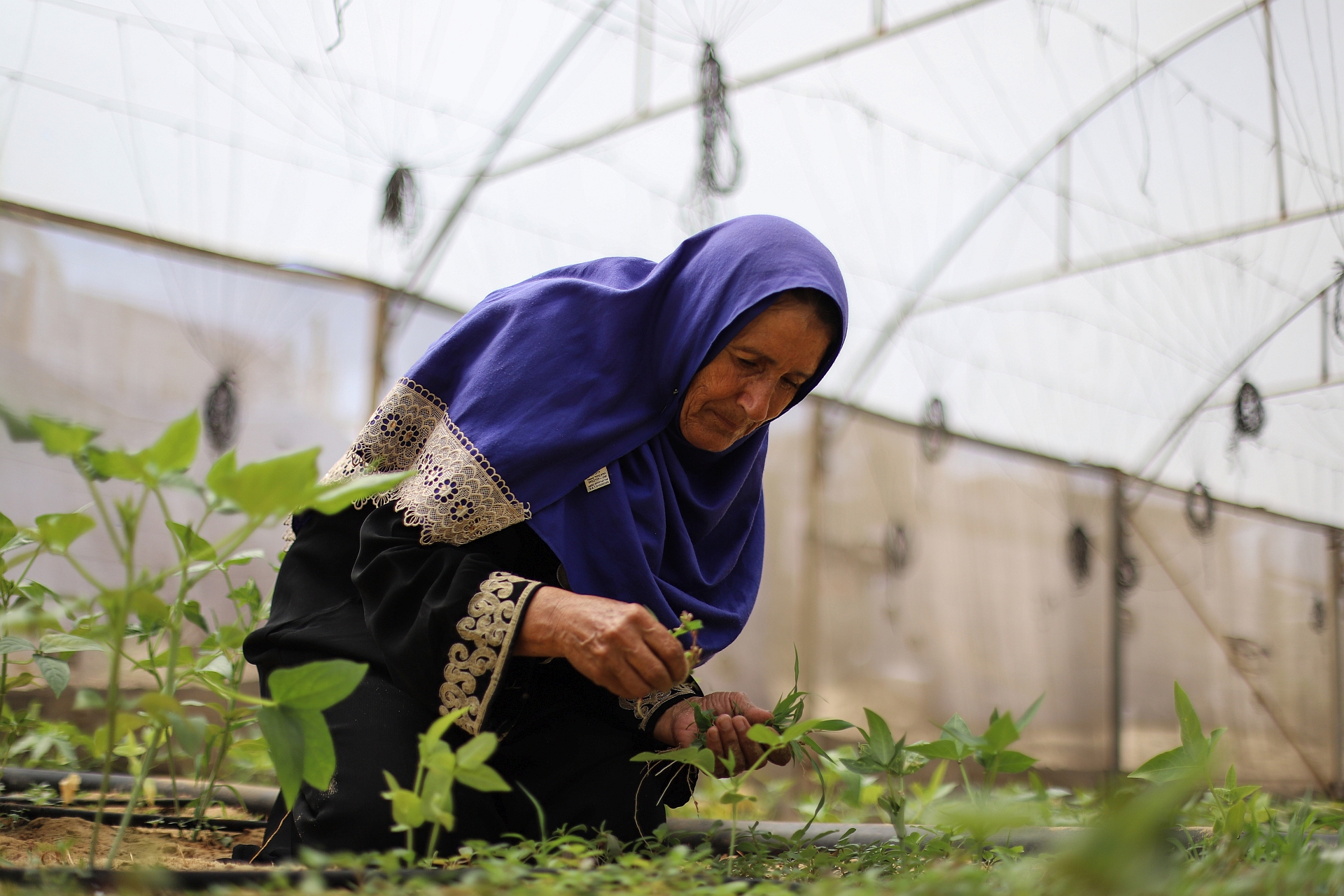Gaza – FAO pilot initiative kickstarts limited local food production amid severe access constraints

FAO's cash-based assistance initiative enabled this farmer to plant a small amount of land. Khan Younis, Gaza Strip, 30 June 2025.
©FAO
Jerusalem/Cairo– With the ongoing crisis having decimated the Gaza Strip’s agrifood sector, the Food and Agriculture Organization of the United Nations (FAO) recently supported 200 farmers in Rafah and Khan Younis to optimize the use of land that is still available to grow critically needed staple crops.
The pilot initiative, funded through the Occupied Palestinian Territory Humanitarian Fund (oPt HF), is a scalable model for re-establishing limited local food production until a sustained ceasefire is reached.
“FAO is not currently able to import anything – not a single seed or bag of fertilizer – into Gaza. Although we remain ready to do so once humanitarian access is restored, in the meantime we are exploring new approaches to supporting Gazan farmers, which is crucial to promoting food security now and will continue to be so once recovery efforts can begin,” said Abdulhakim Elwaer, FAO Assistant Director-General and Regional Representative for the Near East and North Africa.
According to a March 2025 FAO-UNOSAT analysis, only 4.6 percent of Gaza’s land remains available for cultivation. With arable land scarce, those who manage to access it have turned to subsistence farming in makeshift plots that are nestled among tents or that they have cleared of rubble from damaged homes. However, planting and harvesting costs are prohibitive amid staggering inflation, a blockade on agricultural imports and depleted local stocks of inputs such as seedlings and organic fertilisers.
FAO’s pilot programme provided farmers with cash-based assistance to partially cover the cost of cultivating crops such as tomatoes, cucumbers, melons, squash, eggplant, and bell peppers. The cash-based assistance model enabled farmers to purchase resources and inputs directly, based on their specific needs and knowledge of the local market.
FAO plans to scale up this initiative to support other farmers who access land in the Gaza Strip as well as in the West Bank, where access to land and inputs is also constrained.
“In emergency settings like Gaza and the West Bank, there is no better starting point than the farmers themselves. This pilot programme demonstrates that local farmers possess a unique capacity to adapt, drawing on technical and market expertise as well as deep-rooted traditional knowledge. They know how to make every plot of land, every drop of water, and every dollar of support truly count,” said Dr. Azzam Ayasa Saleh, Head of Programme, FAO West Bank and Gaza Strip.
Still, the initiative’s impact, while crucial, must not be overstated in the absence of a sustained ceasefire and unimpeded humanitarian access.
The latest Integrated Food Security Phase Classification (IPC) report warns that Gaza’s entire population faces crisis or worse levels of food insecurity, with one in five people facing famine-like conditions.
